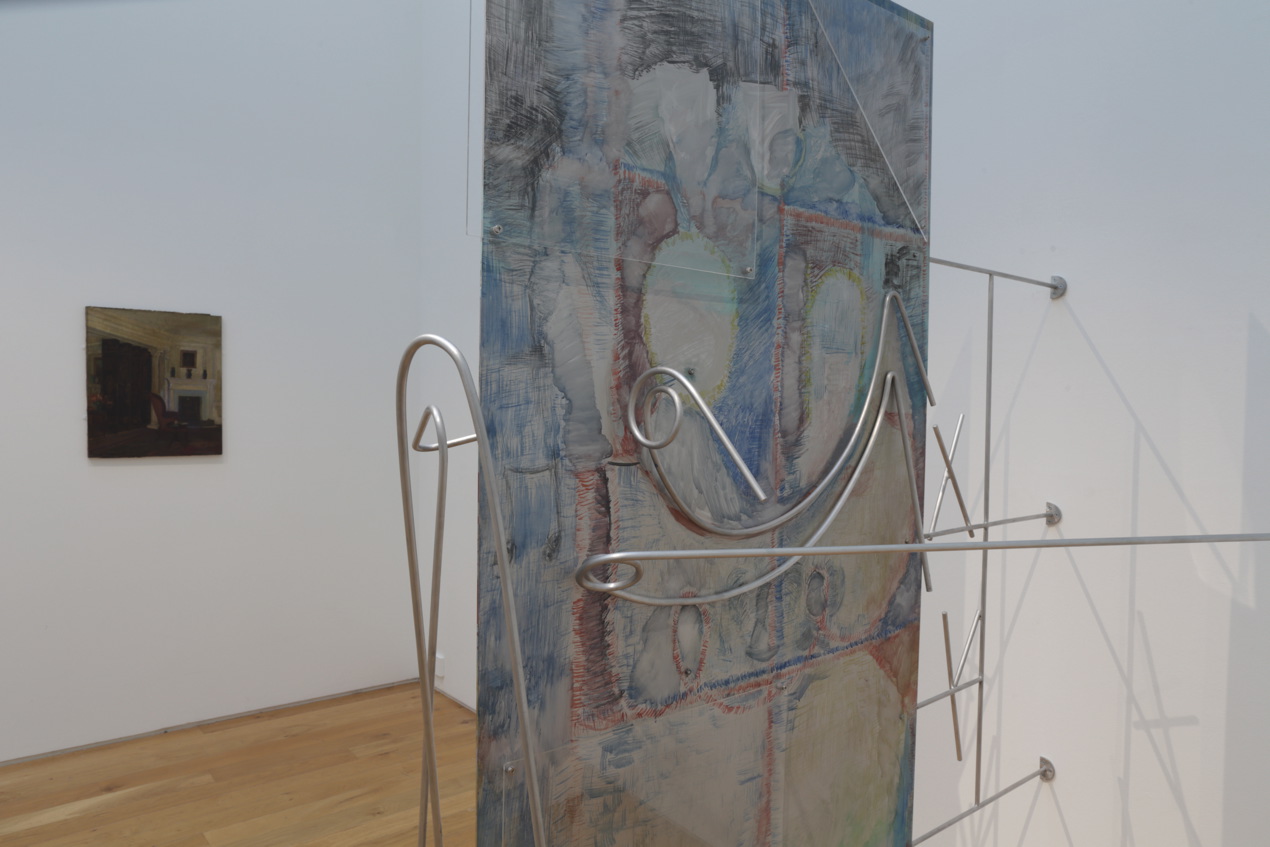In the frame: Sara Barker
Curator Holly Grange takes us behind closed doors at Leeds Art Gallery for a tour of All Clouds are Clocks, All Clocks are Clouds – works by and chosen by Sara Barker
You’re stood in the grand entranceway to Leeds Art Gallery. At the reception desk you’re met by a smiling curator, a few months into her new job and wearing an intriguing lockdown DIY haircut (that’s me). We walk together through and into the Lyons galleries – where the artist Sara Barker has cherry-picked, with an artist’s keen eye for colour, composition and technique, some incredible and also surprising works from the Leeds Art Gallery collection. You are in for a treat as quite a few of these have not been on show for many years.
You notice a quote in vinyl on the gallery wall: “All I’ve ever really wanted my work to do, physically and emotionally, is reverberate with people, be powerful, which is probably why I make sculpture at all. It’s that human physicality that is sort of looming, that is bigger than you. You have to be in it, or surrounded by it, or overwhelmed by it.” Sara Barker, 2020
The common thread tying together this eclectic selection of works is an exploration of space – from expansive landscape vistas to the most intimate of domestic scenes. In retrospect, this has taken on a certain unintended significance at this time in lockdown, following the shrinking of our individual worlds (to varying extents) as a result of social distancing measures.
Everywhere and in abundance is the pure and absolute joy to be found in experimentation and in pushing materials to their limits. You might notice that a large number of the artists are women. Some of their names may be unfamiliar to you. In far too many cases the work of these phenomenal and groundbreaking artists have received little column inches in the art history books and newspapers, in comparison with their male counterparts.
One of these artists is Shelagh Cluett. Not an obscure figure, she was one of the few female sculptors active in Britain in the 1970s to be recognised and exhibited, and the first woman to hold the position of principal lecturer at Chelsea College of Art. Yet she is not as well remembered as her work deserves to be.
Her sculpture looks like a pen and ink drawing made solid in space, or like musical notation. Nullah II (1980) seems to almost leap up off the floor and dance in thin air, joyous and sprightly. On the wall to your left is a small piece by Barker – the smallest in the show, called Fingertips on a Record (2017). Placed in conversation with the Cluett sculptures, there is a delicacy and lightness of touch common to both. There is an elemental quality to the painted surface – like a snowstorm glimpsed through half-closed eyes. The fingers of a steel rod protrude out from the painting like the bare branches of a tree in winter.
We turn around and there is another pair of paintings in dialogue with one another. A large, almost door-sized piece, Barker’s Camp, Coffee and Communication of Errors (2016), juts out of the wall – hovering somewhere between sculpture and painting, between 2D and 3D. Philip Pullman fans may think of The Subtle Knife cutting through space and opening portals to other worlds (Pullman is a favourite author of the artist). The link with language and literature is vital to Barker’s artistic practice – when a writer describes a place, whether imagined or remembered, that space opens up in the mind of the reader. So too with art.
Just to the side of it is a rather diminutive painting of an empty sitting room, an armchair pulled up to a fireplace and a side-table with a cup of coffee and a book left on the table as if the space has just been vacated. This is a painting by a Leeds artist Francis Wall titled Interior with Chinese Screen (1926).
We complete a circuit of the gallery – viewing works by Wilhemina Barns-Graham, Francis Butterfield, Prunella Clough, Patrick Heron, Henry G Hoyland, Mary Lord, Paul Nash, Oleg Prokofiev, Ceri Richards, William Scott, John Tunnard, Alfred Wallis, Christopher Wood and Sylvia Wishart – all interspersed by the works of Barker, like punctuation, full-stops and commas in a sentence.
To make her careful selection, Barker spent many hours poring over these works in the flesh. She describes “studying their surfaces in the store here at the gallery, in half light, investigating their details”, and feeling as if she’s “really understood them in a different way, lived with them, looked at them from the perspective of making them, placed myself behind the canvas”. The connection she feels to these artworks is deep felt and intensely personal, developing a relationship with them that “feels close to possession”.
Perhaps this makes you think about the last time you felt a similar connection to, or sense of possession over, an artwork in a public gallery. You ask yourself which of these artworks you would want to take home, to live with.
I admit to having my own preference – for a work that speaks to me of home by the sea and by association of much missed family and friends, a former life living in Penzance and working in St Ives, on the edges of the Atlantic Ocean. The painting is called Mount’s Bay with St Michael’s Mount, Cornwall (c.1928-40) by the self-taught artist and former mariner Alfred Wallis. It depicts boats that had sought safety in the harbour – now setting sail for open waters.
Photos: Christabel Mitchell and Simon Warner

Leave a reply
Your email address will not be published.